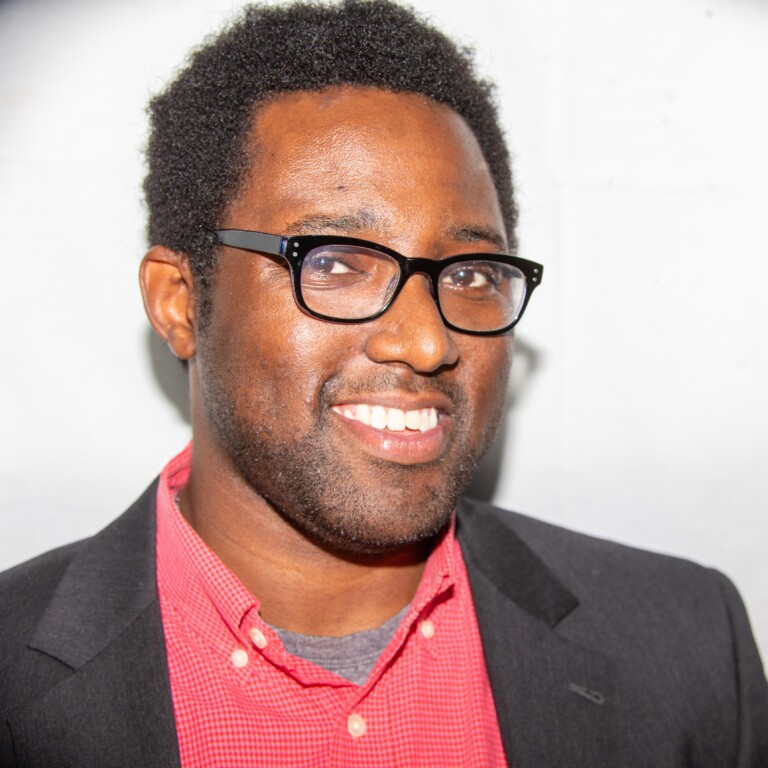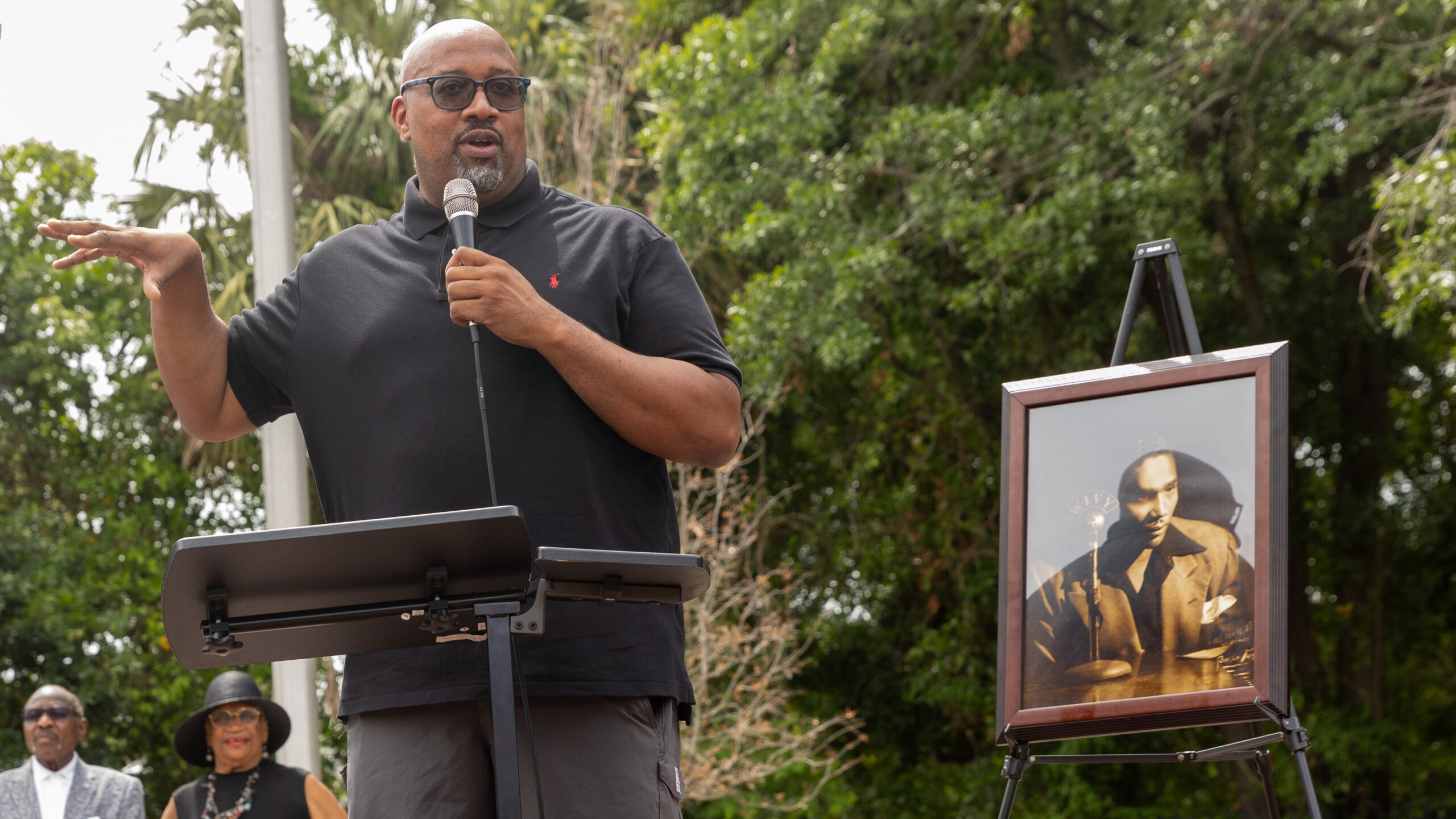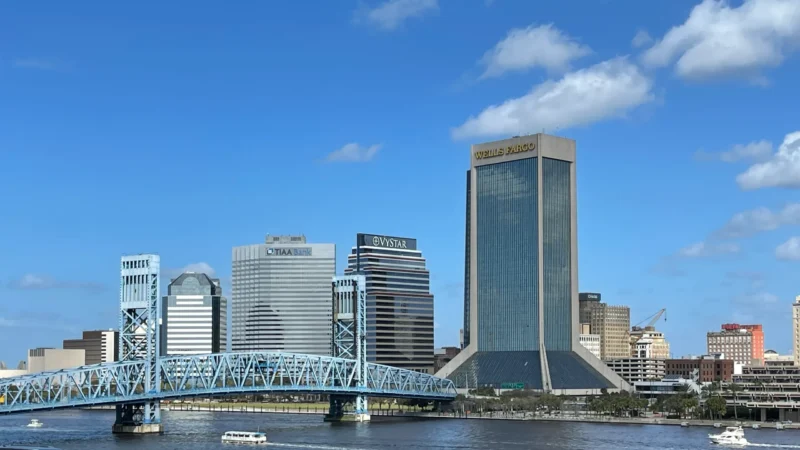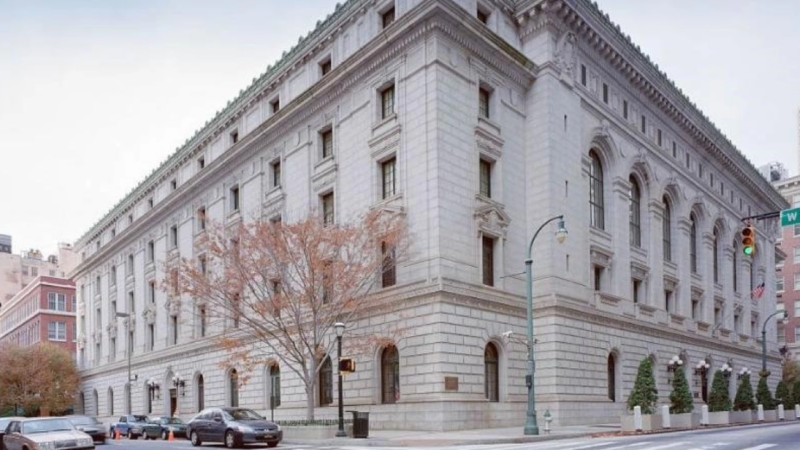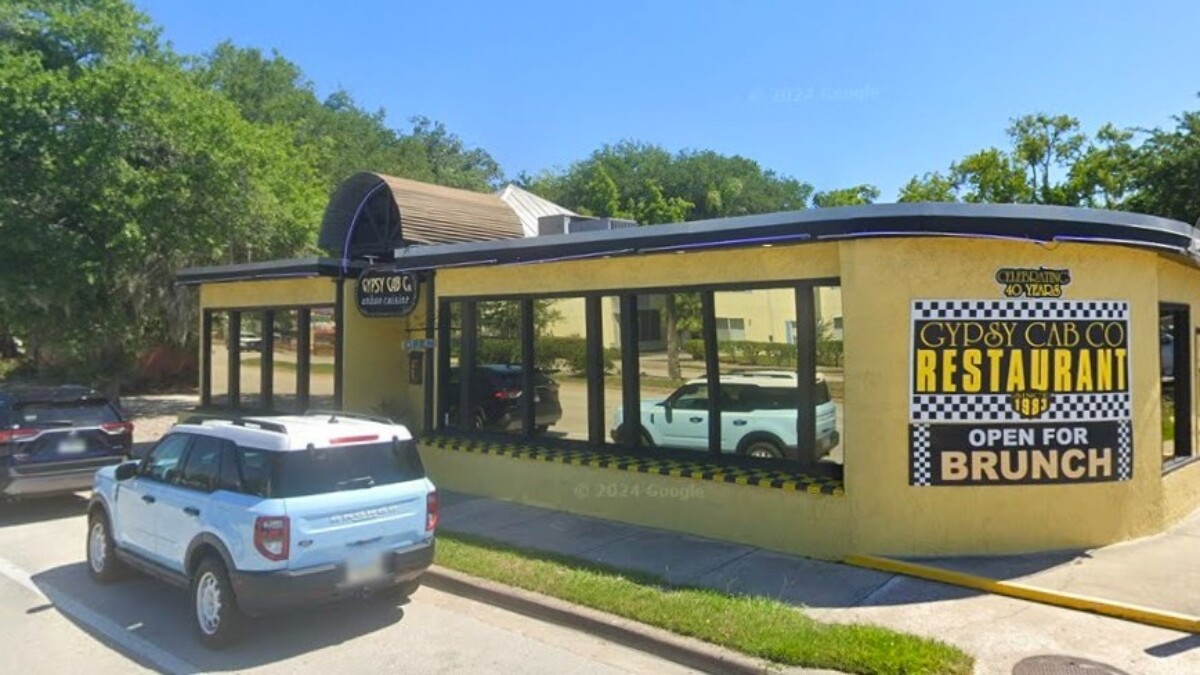Community titans devoted a warm, springtime afternoon Out East to the neighborhood legends whose efforts set the foundation for the Eastside’s current metamorphosis.
Nearly 100 people attended the rededication Thursday of Buster Ford Checkerboard Park. The park was initially dedicated in 1996 but fell into disrepair and abandonment.
Eastside residents, community leaders, nonprofits and even the Jaguars Foundation invested their time, talent and sweat equity to restore the park at the corner of A. Philip Randolph and Union Street.
Thursday’s ceremony also served as an opportunity to unveil a mural to Alvin “Buster” Mitchell, Ford’s nephew who took up the mantle of Eastside advocate until his death in 2021.
A 15-foot mural of Mitchell is evident on the brick building that forms the north border of the park.
“The park being rededicated opens up so many individuals, like Miss Honey Holzendorf, to be able to make their imprint on the ground as we move forward in making Out East what it was once again,” said Ford’s daughter, Elaine Jackson.
Jackson’s ties to the Eastside trace four generations.
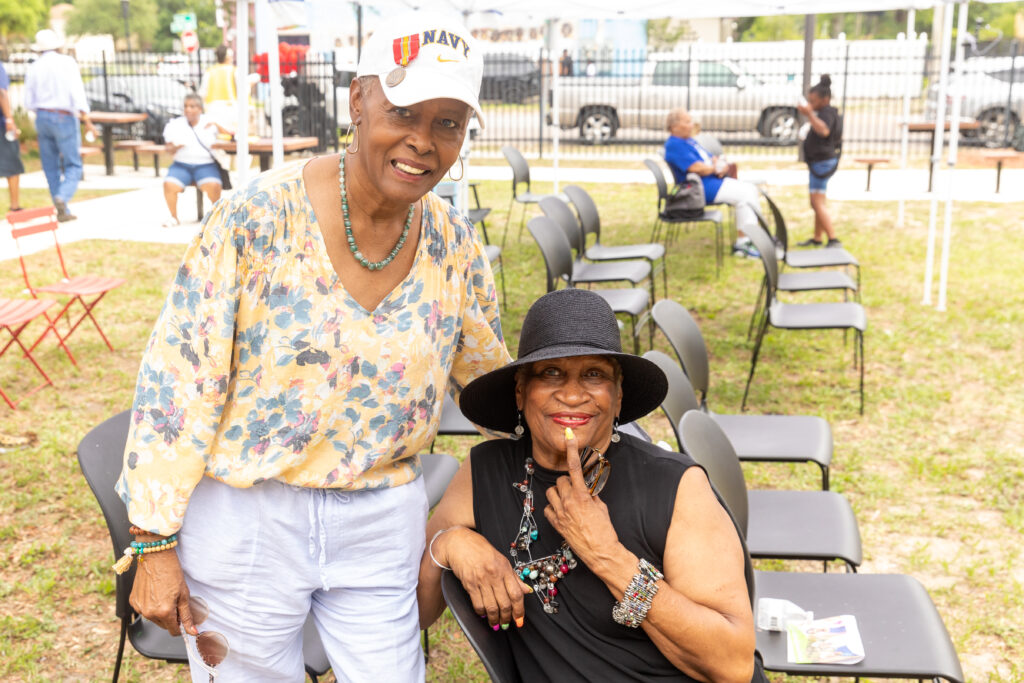
She acknowledges she was one who left the Eastside, to earn a degree from Florida A&M University in the 1960s, and sparingly returned over the decades. She lived in Washington for 30 years before moving back to Jacksonville about 25 years ago. When Jackson returned she realized the “dire need” for community engagement.
Eastside residents have spent nearly a decade organizing neighbors and beautifying the neighborhood. Those efforts resulted in the community being named to the National Register of Historic Places in 2023.
Other historic and predominantly Black neighborhoods in Jacksonville did not retain the character that made them famous over the decades. City Council member Jimmy Peluso acknowledged the gentrification of the city’s predominantly Black neighborhoods during his remarks Thursday:
“We see the results of it in Brooklyn right now, not looking at all like it did 20 years ago, and specifically 50 years ago” said Peluso, who represents both neighborhoods on the council.
Peluso said the $40 million Community Benefits Agreement package that the Jaguars and the city of Jacksonville will fund specifically for the Eastside is part of a wider commitment to ensure development is congruent with community and neighborhood desires.
Lucille McCloud has lived Out East for more than 90 years. She recalled when the grass she sat on inside Buster Ford Checkerboard Park on Thursday afternoon was once home to a confectionary, a funeral home and more.
McCloud is a neighborhood griot who can recall when William “Pop” Raines and Eugene Butler served as principals at Matthew Gilbert High School because she was a student at that time.
“I’m glad they made use of this park,” McCloud said. “Quite some time ago, the homeless took it over. I’m happy they converted it into a place where people could play checkers — not have all that alcohol and drinking.”
The Eastside is witnessing a resurgence.
When women like McCloud and 87-year-old Veliria Shuford were younger, the neighborhood had small businesses that were owned by Black people, white people as well as people of Middle Eastern heritage and more. Today, Shuford and McCloud say, Eastside business owners are predominantly Black.
Ford was one of those business owners. In the 1950s, he took over Crosby’s Confectionary at the corner of Union Street and what is now known as A. Philip Randolph Boulevard. He renamed it Buster Ford’s Bird Land.
Ford was also a disc jockey at WMBR and WIVY.
Local historian and author Rodney Hurst says the legacy of Ford and Mitchell is just as much a part of the Eastside as noted anthropologist and academic Johnnetta Betsch Cole or Olympic champion Bob Hayes.
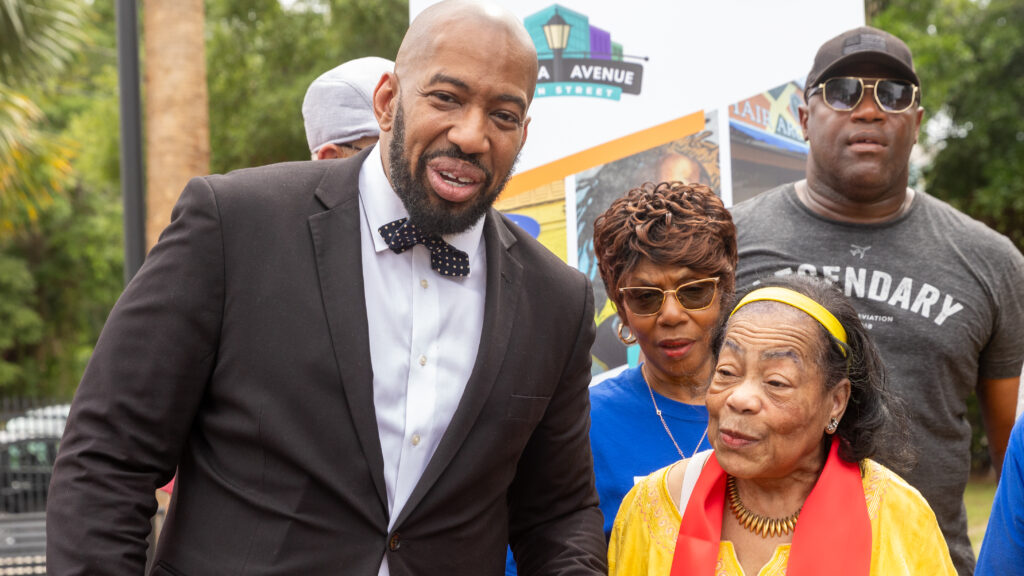
“Heroes are not just coming along to do something. They had a mission,” Hurst said. “Buster Ford had a mission for the Eastside.”
Those who ventured inside the revamped Buster Ford Checkerboard Park instinctively know it is their mission to uphold it.
